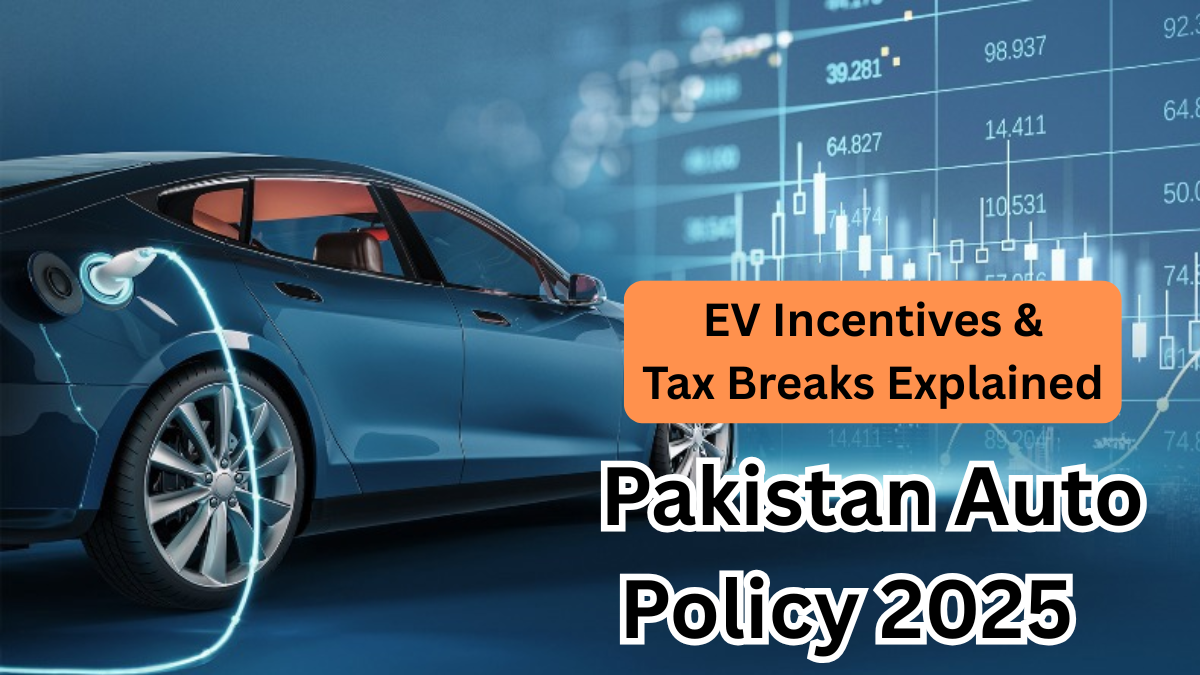Pakistan is accelerating its shift towards sustainable mobility with the launch of the Pakistan Auto Policy 2025. This comprehensive framework aims to transform the country’s transportation sector by promoting electric vehicles (EVs) through a range of incentives and tax breaks. Whether you’re a consumer, manufacturer, or investor, here’s a detailed breakdown of what this policy means for you.
What Is the Pakistan Auto Policy 2025?
The Pakistan Auto Policy 2025 is a strategic initiative by the government to:
-
Increase EV adoption: Targeting 30% of new vehicle sales to be electric by 2030, with a long-term goal of 90% by 2040.
-
Reduce carbon emissions: Addressing the transportation sector’s contribution to nearly 30% of the country’s greenhouse gas emissions.
-
Promote local manufacturing: Encouraging domestic production of EVs and related components.
-
Develop infrastructure: Establishing a robust network of EV charging stations and battery swapping facilities.
EV Incentives & Tax Breaks
The policy introduces several financial incentives to make EVs more accessible:
Subsidies for Consumers
-
Electric Bikes: PKR 65,000 subsidy per unit.
-
Electric Rickshaws: PKR 400,000 subsidy per unit.
-
Electric Cars: PKR 15,000 per kWh subsidy.
Tax Relief Measures
| Tax Category | EV Rate | Conventional Vehicle Rate |
|---|---|---|
| General Sales Tax (GST) | 1% | 17% |
| Import Duty on Batteries | 1% | 20% |
| Import Duty on Charging Equip. | 1% | 20% |
| Federal Excise Duty (FED) | Exempt | 5% |
| Registration Fee | Waived | Applicable |
Infrastructure Development
To support EV adoption, the policy outlines plans for:
-
Charging Stations: Establishing 40 EV charging stations at intervals of approximately 105 kilometers.
-
Battery Swapping Stations: Implementing battery swapping technologies for two-wheelers and three-wheelers.
-
Grid Integration: Promoting Vehicle-to-Grid (V2G) systems to enhance energy efficiency.
Empowering Women in the EV Sector
A notable aspect of the policy is its focus on gender inclusivity:
-
Subsidy Allocation: 25% of the electric bike subsidy is reserved for female riders.
-
Support for Women Entrepreneurs: Encouraging women-led courier services and ride-hailing platforms.
-
Access to Financing: Facilitating easier access to financing for women interested in EV businesses.
Environmental & Economic Benefits
The Pakistan Auto Policy 2025 is expected to yield significant environmental and economic benefits:
-
Fuel Savings: Estimated annual savings of over 2 billion liters of fuel.
-
CO₂ Reduction: Projected reduction of 4.5 million tons of CO₂ emissions per year.
-
Healthcare Savings: Potential savings of approximately USD 405 million annually in healthcare costs related to pollution.
-
Long-Term Fiscal Benefits: An anticipated fiscal benefit of Rs 800 billion over 25 years.
FAQs
1. What is the Pakistan Auto Policy 2025?
The Pakistan Auto Policy 2025 is a government initiative aimed at promoting electric vehicles through subsidies, tax breaks, and infrastructure development to reduce carbon emissions and foster sustainable transportation.
2. How can consumers benefit from EV incentives?
Consumers can avail subsidies on electric bikes, rickshaws, and cars, along with tax relief on sales, imports, and registration fees, making EVs more affordable.
3. Are there any incentives for women under the policy?
Yes, 25% of the electric bike subsidy is reserved for women, along with support for women entrepreneurs in the EV sector.
4. What are the long-term goals of the policy?
The policy aims to achieve 30% EV adoption by 2030 and 90% by 2040, contributing to significant environmental and economic benefits.
Final Thoughts
The Pakistan Auto Policy 2025 marks a pivotal step towards a greener and more sustainable future for the country’s transportation sector. With its comprehensive incentives, infrastructure development plans, and focus on inclusivity, the policy is poised to drive a significant transformation in how Pakistan moves.
Click here to learn more
